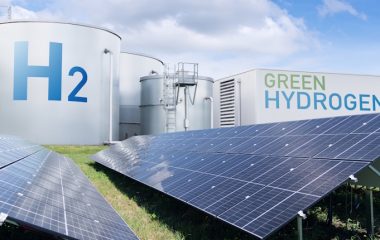
Photo: Ver_Ena from Pixabay
Fossil fuels made a comeback in 2021 as the leading energy source in power generation in the European Union (EU) after being surpassed by renewables in 2020, according to preliminary data from Eurostat.
Power generation from certain types of coal increased substantially in 2021, with the volume of electricity produced from those in the “other bituminous coal” category jumping 25.6%, and from lignite 16.2%.
Among renewable sources in power production, solar recorded the biggest growth
On the renewables side, the biggest increases were seen in electricity produced from solar energy, 13%, followed by solid biofuels 9.6%, while unfavorable weather conditions brought down power generation from hydro and wind, by 1.2% and 3%, respectively.
Nuclear power plants produced 7% more electricity compared with 2020
The EU’s statistical office also highlighted that the output of nuclear power plants increased by 7% last year compared with 2020.
As economic activity rebounded after COVID-19 lockdowns, 2021 saw a 4.2% rise in total power supply in the EU, Eurostat said. By individual fuels, the biggest contributors to the overall electricity generation in 2021 were nuclear energy, with 731 terawatt-hours (TWh), natural gas (550 TWh), wind (386 TWh), hydropower (370 TWh), lignite (227 TWh), other bituminous coal (193 TWh), and solar (163 TWh).
Overall fossil fuel consumption also rose, but did not rebound to pre-pandemic levels
Preliminary data on the EU’s inland energy consumption – the overall supply of energy for all activities on its territory – indicate an increase in the consumption of fossil fuels, reflecting the EU’s post-pandemic economic recovery. However, it remained below the 2019 levels.
The consumption of petroleum products rose 5% in 2021, but its decline in 2020 was much sharper, at 12.4%. Compared with 2019, data for 2021 show an 8.1% lower petroleum products consumption, according to Eurostat.
Natural gas consumption in 2021 was the highest in ten years, reaching 15.8 million terajoules (TJ), a 3.9% increase against 2020. Eurostat also noted that only 1.7 million TJ of natural gas came from domestic production, while the rest was imported.
Bulgaria had the EU’s sharpest rise in CO2 emissions in 2021
Also in 2021, the lifting of COVID-19 lockdowns in the EU resulted in a 6.3% rise in CO2 emissions from fossil fuel combustion (mainly oil and oil products, natural gas, coal, and peat), according to Eurostat.
Emissions increased against 2020 in most EU countries, with the sharpest rises seen in Bulgaria, 18%, Estonia, 13.1%, Slovakia, 11.4%, and Italy, 10.6%. The only two countries with an estimated decrease in CO2 emissions are Portugal, with a 5.5% decline, and Finland, with 1.5%.









Be the first one to comment on this article.